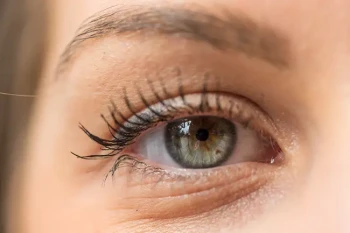
With review and contributions from Ophthalmologist Donald Stewart, MD (SouthPark, Matthews)
Have you ever stared at something for a long time, only to look away and see a negative version of the image floating in your vision? This is called an afterimage, and in today’s blog we’d like to teach you what they are and what causes them.
What is an afterimage?
An afterimage is an image that continues to appear in the eyes after a period of exposure to the original image. These can be either negative or positive afterimages. In most cases, this is an eye-related phenomenon, although there are some cases in which it is related to an issue called palinopsia.
Afterimages only last a few seconds to a minute before fading away.
What causes an afterimage?
Negative afterimages occur when the rods and cones, which are part of the retina, are overstimulated and become desensitized. This desensitization is strongest for cells viewing the brightest part of the image, but is weakest for those viewing the darkest. When you look away, the least depleted cells react strongest, and vice versa, and you see an image with colors that are the reverse of how the image originally appeared. Many optical illusions take advantage of negative afterimages. For example, if you stare at a yellow, turquoise, and black American flag, then look at a white background, you will see the flag with its correct colors.
A positive afterimage is when you see the image, but it is the same colors as the original. Unlike with negative afterimages, it is believed positive afterimages are caused when your rods and cones have no stimulation, such as when the lights abruptly go out.
What is palinopsia?

Palinopsia is a term that encompasses a number of cases where people see an image even after a person is no longer looking at it. Hallucinatory palinopsia is usually due to seizures or lesions on the brain, while illusory palinopsia is usually caused by issues including migraines, head trauma, and reactions to prescription drugs, CEENTA Ophthalmologist Donald Stewart, MD, said.
While afterimages are normal in most cases, if you experience any of the symptoms related to palinopsia or have any other eye concerns, don’t hesitate to make an appointment with a doctor.
This blog is for informational purposes only. For specific medical questions, please consult your doctor. Would you like an appointment with Dr. Stewart? Call 704-295-3000.
You may also be interested in

Learn how different parts of your eye work together to create vision, including the cornea, lens, retina, and optic nerve.

CEENTA pediatric ophthalmologist Elliot McKee, MD, appeared on WCNC's Charlotte Today on April 16th, 2024, to discuss strabismus.
Leave a Comment
Back to News


